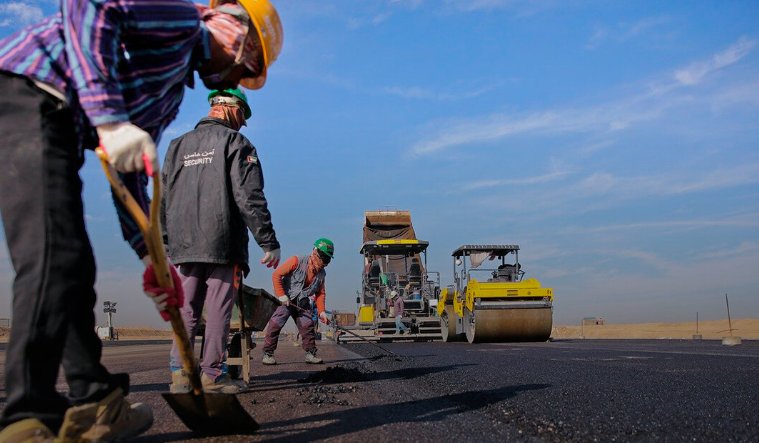The Costly Toll of Neglected Preventative Asphalt Maintenance: Economic and Environmental Impacts
by siteadmin

Maintaining asphalt surfaces is not just about preserving aesthetics; it’s also about safeguarding against economic and environmental consequences. Neglected preventative maintenance can lead to accelerated deterioration of asphalt pavements, resulting in significant costs and environmental impacts. In this blog post, we’ll explore the economic and environmental repercussions of neglecting preventative asphalt maintenance and highlight the importance of proactive care for sustainable infrastructure management.
Economic Impacts:
- Increased Repair Costs: Neglected asphalt surfaces are prone to deterioration, leading to the formation of potholes, cracks, and surface defects. Delaying repairs allows minor issues to escalate into more extensive damage, ultimately requiring costly repairs or even pavement replacement. The longer maintenance is deferred, the more expensive the repairs become, placing a strain on municipal budgets and taxpayer funds.
- Decreased Property Values: Cracked, uneven, and deteriorating asphalt surfaces detract from the curb appeal and perceived value of properties. Neglected driveways, parking lots, and roads can deter potential buyers and tenants, resulting in decreased property values and lost revenue for property owners. Maintaining well-kept asphalt surfaces enhances the aesthetic appeal of properties and contributes to higher resale values.
- Increased Liability Risks: Neglected asphalt surfaces pose safety hazards to pedestrians, cyclists, and motorists. Potholes, cracks, and uneven surfaces increase the risk of trips, falls, and vehicle damage, potentially exposing property owners to liability claims and lawsuits. Proactively maintaining asphalt surfaces reduces the likelihood of accidents and minimizes legal liabilities associated with neglected infrastructure.
Environmental Impacts:
- Stormwater Runoff Pollution: Cracked and deteriorating asphalt surfaces allow pollutants such as oil, grease, and heavy metals to leach into stormwater runoff, contaminating waterways and ecosystems. Untreated stormwater runoff can degrade water quality, harm aquatic life, and compromise public health. Implementing preventative maintenance measures such as sealcoating and crack sealing helps minimize pollution and protect the environment.
- Increased Heat Island Effect: Dark-colored asphalt surfaces absorb and retain heat, contributing to the urban heat island effect, especially in densely populated areas. Neglected asphalt surfaces with degraded pavement and reduced reflectivity exacerbate heat buildup, leading to higher ambient temperatures and increased energy consumption for cooling. Regular maintenance, including sealcoating and resurfacing, helps mitigate the heat island effect by preserving the reflective properties of asphalt surfaces.
- Greenhouse Gas Emissions: The production, transportation, and installation of asphalt materials contribute to greenhouse gas emissions, including carbon dioxide and volatile organic compounds. Neglected asphalt surfaces require more frequent repairs and replacements, resulting in increased energy consumption and emissions associated with asphalt production and construction activities. By implementing preventative maintenance strategies, such as crack sealing and pavement preservation, property owners can reduce the environmental footprint of asphalt infrastructure.
Neglected preventative asphalt maintenance not only exacts a financial toll but also imposes significant environmental burdens. The economic costs of deferred maintenance, including increased repair expenses, decreased property values, and liability risks, can strain budgets and hinder sustainable infrastructure management. Similarly, the environmental impacts of neglected asphalt surfaces, such as stormwater pollution, heat island effects, and greenhouse gas emissions, threaten ecosystems and public health. By prioritizing proactive maintenance and investing in sustainable asphalt management practices, property owners can mitigate these impacts, preserve infrastructure assets, and promote resilient and eco-friendly communities.
Maintaining asphalt surfaces is not just about preserving aesthetics; it’s also about safeguarding against economic and environmental consequences. Neglected preventative maintenance can lead to accelerated deterioration of asphalt pavements, resulting in significant costs and environmental impacts. In this blog post, we’ll explore the economic and environmental repercussions of neglecting preventative asphalt maintenance and highlight the…
Recent Posts
- Balancing Act: Environmental Impact and Sustainability in Asphalt Paving
- Smooth Moves: Asphalt Paving Maintenance Strategies for Sustaining Smoothness
- Innovating Asphalt Paving: Exploring Advanced Asphalt Mix Design Methodologies
- The Importance of Pothole Repair: Health Impacts of Pothole-Related Accidents
- Understanding Chemical Exposure and Its Impact on Asphalt Degradation
